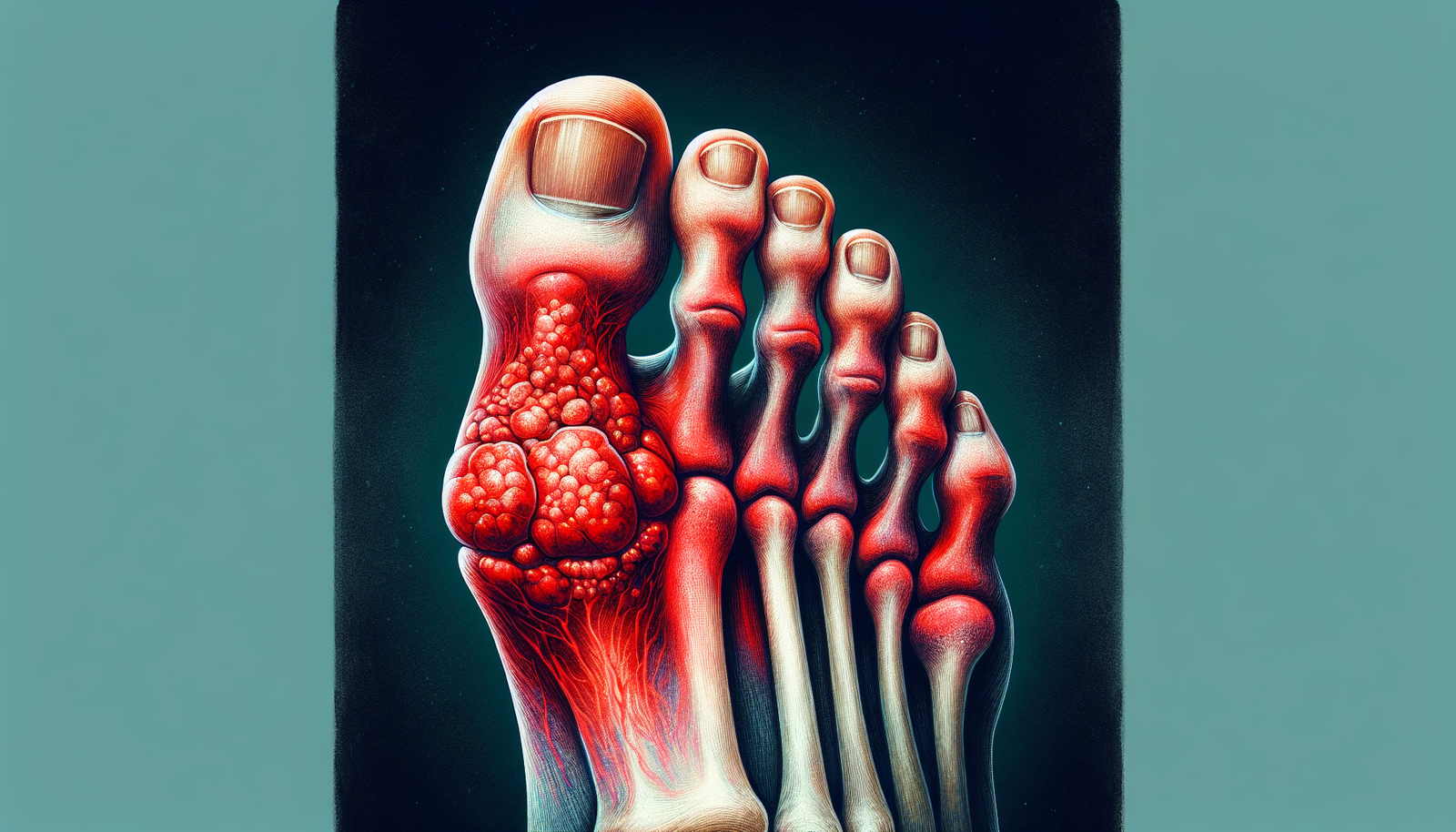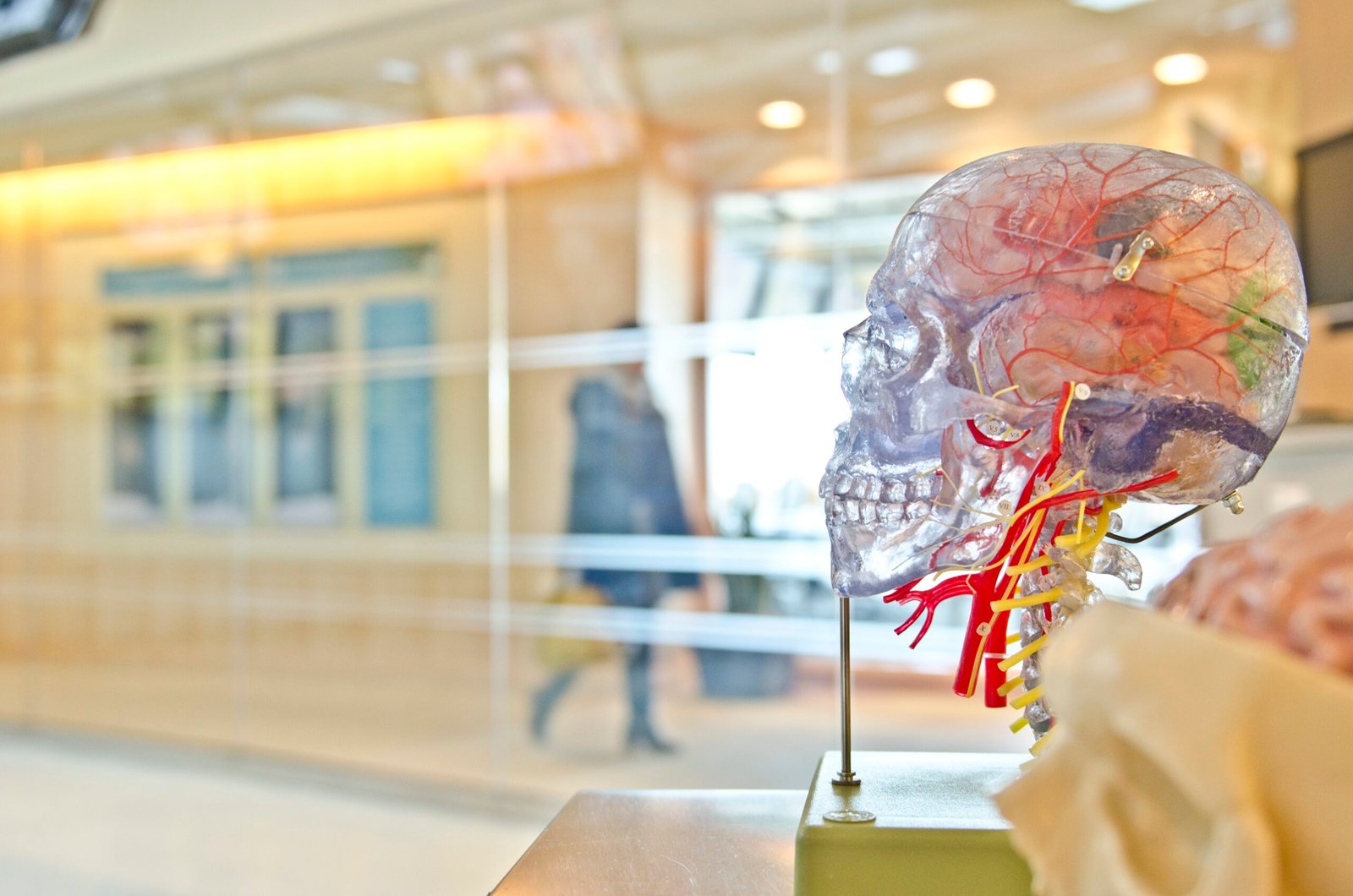Ah, gout – a name that may seem whimsical, yet the pain it brings is anything but. If you've ever experienced a sudden and intense joint pain, accompanied by redness and swelling, then you might have encountered this not-so-friendly visitor. But fear not, my friend, for in this article, we shall unravel the mystery of gout and explore its telltale signs. So gather 'round and let's discover the symptoms of gout together!
General Overview
Understanding Gout
Gout is a type of arthritis that occurs when uric acid crystals accumulate in the joints. Uric acid is a waste product that is formed when the body breaks down purines, which are found in certain foods and are also naturally produced by the body. In a healthy individual, uric acid dissolves in the blood and is then excreted through the kidneys. However, in people with gout, the uric acid levels in the blood become too high, leading to the formation of crystals in the joints.
Prevalence of Gout
Gout is a common form of arthritis, with millions of people around the world affected by this condition. It is estimated that approximately 4% of adults in the United States have gout, making it one of the most prevalent forms of arthritis in the country. Gout typically affects men more than women, although women are more likely to develop the condition after menopause. The prevalence of gout is also higher in certain ethnic groups, such as people of Pacific Islander or African descent.
Causes of Gout
High Uric Acid Levels
One of the primary causes of gout is the presence of high levels of uric acid in the blood. When the body produces excess uric acid or does not excrete it efficiently, the uric acid can build up and form crystals in the joints. This can be due to various factors, including overproduction of uric acid, decreased excretion of uric acid by the kidneys, or a combination of both.
Dietary Factors
Certain dietary factors can contribute to the development of gout. Foods that are high in purines, such as red meat, organ meats, shellfish, and alcohol, can increase uric acid levels in the body. Additionally, consuming sugary drinks, fructose, and excessive amounts of alcohol, particularly beer, can increase the risk of developing gout.
Genetic Predisposition
There is a strong genetic component to gout, with a family history of the condition increasing the risk of developing it. Certain genetic variations can affect the way the body metabolizes uric acid, leading to elevated levels and an increased risk of gout.
Certain Medical Conditions
Certain medical conditions can increase the likelihood of developing gout. These include obesity, high blood pressure, diabetes, metabolic syndrome, kidney disease, and certain types of cancer. Medications such as diuretics, which are often prescribed for high blood pressure, can also contribute to the development of gout by reducing the excretion of uric acid.
Common Symptoms
Sudden and Severe Joint Pain
One of the hallmark symptoms of gout is the sudden onset of intense joint pain. The pain usually affects a single joint, most commonly the big toe, and typically occurs at night or in the early morning. The pain can be excruciating, making it difficult to walk or put weight on the affected joint.
Swelling and Redness
Along with the pain, gout can cause swelling and redness around the affected joint. The joint may appear swollen and feel warm to the touch. The swelling and redness are a result of the body's inflammatory response to the presence of uric acid crystals in the joint.
Limited Range of Motion
Gout can also lead to a limited range of motion in the affected joint. The swelling and inflammation can make it difficult to bend or move the joint, causing stiffness and decreased mobility.
Warmth and Tenderness
The affected joint may feel warm and tender to the touch. This is due to the inflammatory response triggered by the presence of uric acid crystals in the joint tissues. The warmth and tenderness can further contribute to the discomfort experienced by individuals with gout.
Thickening or Lumps in Joints
In some cases, gout can lead to the formation of tophi, which are small, firm lumps that develop under the skin around the joints. Tophi are a result of the accumulation of uric acid crystals and can cause joint deformities if left untreated.
Affected Joints
Big Toe (Podagra)
The big toe is the most commonly affected joint in gout, with approximately 50% of gout cases involving the big toe joint. The intense pain, swelling, and redness associated with gout attacks in the big toe are known as podagra.
Ankle
The ankle joint is another common site of gout attacks. The symptoms in the ankle are similar to those experienced in the big toe, including severe pain, swelling, and restricted movement.
Knee
Gout can also affect the knee joint, causing swelling, pain, and limited mobility. The knee joint may appear red and warm to the touch during a gout attack.
Wrist
Although less common than the big toe, ankle, and knee, gout can also affect the wrist joint. The symptoms in the wrist are similar to those experienced in other joints, including pain, swelling, and limited range of motion.
Elbow
Gout attacks in the elbow joint are relatively rare but can occur. The symptoms in the elbow joint are similar to those experienced in other joints, including severe pain, swelling, and redness.

Duration and Recurrence
Acute Gout Attacks
Gout attacks are characterized by sudden and severe joint pain, swelling, and inflammation. These episodes, known as acute gout attacks, typically last between 3 to 10 days. The pain and symptoms usually peak within 24 hours of onset and gradually subside over the course of several days.
Chronic Gout
Chronic gout refers to the long-term presence of uric acid crystals in the joints. It is characterized by recurrent gout attacks and can lead to joint damage if left untreated. Chronic gout often occurs when the underlying causes, such as high uric acid levels, are not effectively managed.
Associated Symptoms
Fever and Chills
During a gout attack, some individuals may experience fever and chills. This is a result of the body's inflammatory response to the presence of uric acid crystals. The fever and chills typically subside as the gout attack resolves.
Fatigue and Malaise
Fatigue and malaise are common symptoms experienced by individuals with gout, particularly during acute gout attacks. The combination of pain, inflammation, and disrupted sleep due to the discomfort can contribute to feelings of exhaustion and reduced energy levels.

Risk Factors
Gender
Gout is more common in men than women, particularly during early adulthood. However, women have a higher risk of developing gout after menopause, as the levels of estrogen, which helps excrete uric acid, decrease.
Age
The risk of developing gout increases with age. Gout is rare in individuals under the age of 30, but becomes more prevalent with advancing age.
Family History
Having a family history of gout increases the likelihood of developing the condition. Genetic factors play a significant role in determining an individual's susceptibility to gout.
Obesity
Being overweight or obese can increase the risk of developing gout. Excess weight can lead to higher levels of uric acid in the blood as well as increased inflammation, both of which contribute to the development of gout.
Diet
A diet high in purine-rich foods, such as red meat, organ meats, seafood, and sugary drinks, can raise uric acid levels and increase the risk of gout. Consuming excessive amounts of alcohol, particularly beer, can also contribute to the development of gout.
Alcohol Consumption
Drinking alcohol, especially beer and spirits, increases uric acid production and impairs its excretion, making it a significant risk factor for developing gout. Individuals who regularly consume alcohol are more likely to experience gout attacks.
Complications
Joint Damage
If left untreated or inadequately managed, gout can lead to joint damage over time. The presence of uric acid crystals in the joints can cause erosion of the cartilage and bone, leading to joint deformities and chronic pain.
Kidney Stones
Gout is associated with an increased risk of kidney stone formation. Uric acid crystals can accumulate in the kidneys, forming stones that can cause severe pain and potentially lead to kidney damage if not treated.
Tophi
Tophi are deposits of uric acid crystals that develop under the skin and in other tissues. These firm lumps can cause joint deformities and may require surgical intervention for removal.

Diagnosis
Medical History and Physical Examination
To diagnose gout, a healthcare provider will typically start by taking a detailed medical history and performing a physical examination. They will inquire about the symptoms experienced, family history of gout, any recent dietary changes, and any underlying medical conditions.
Blood Tests
Blood tests can help measure the levels of uric acid in the blood. Elevated uric acid levels alone are not definitive proof of gout, as some individuals with high levels never experience gout attacks, while others with normal levels may still have gout. However, blood tests can provide additional information to support the diagnosis.
Joint Fluid Analysis
During a gout attack, the affected joint may be swollen and painful. A healthcare provider may use a needle to extract a sample of the fluid from the joint for analysis. The presence of uric acid crystals in the joint fluid is a strong indicator of gout.
Imaging Tests
In some cases, imaging tests such as X-rays, ultrasound, or CT scans may be ordered to evaluate joint damage and rule out other possible causes of the symptoms.
Treatment Options
Medications
Medications are commonly used to manage acute gout attacks and prevent future attacks. Nonsteroidal anti-inflammatory drugs (NSAIDs), corticosteroids, and colchicine are often prescribed to relieve pain, reduce inflammation, and shorten the duration of gout attacks. Medications that lower uric acid levels, such as allopurinol and febuxostat, may also be prescribed to prevent future gout attacks.
Lifestyle Changes
Adopting a healthy lifestyle can help manage gout and reduce the frequency of gout attacks. This includes maintaining a healthy weight, exercising regularly, getting enough sleep, and managing stress levels.
Dietary Modifications
Making dietary modifications can also play a significant role in managing gout. Limiting the intake of purine-rich foods, sugary drinks, and alcohol can help lower uric acid levels in the body. Increasing the consumption of low-fat dairy products and maintaining a well-balanced diet rich in fruits, vegetables, and whole grains is also beneficial.
Alternative Therapies
Some individuals may find relief from gout symptoms through alternative therapies such as acupuncture, herbal supplements, or applying cold or hot packs to the affected joint. While these approaches may provide temporary relief, it is important to consult with a healthcare provider before trying any alternative therapies.
In conclusion, gout is a form of arthritis characterized by the accumulation of uric acid crystals in the joints. It can cause sudden and severe joint pain, swelling, and limited mobility. Gout primarily affects the big toe, but can also affect other joints such as the ankle, knee, wrist, and elbow. It can be managed through a combination of medications, lifestyle changes, dietary modifications, and alternative therapies. Seeking timely medical attention and following a comprehensive treatment plan can help individuals with gout effectively manage their symptoms and improve their quality of life.


